Over the last decade, online businesses have grown 2.5 times faster than the global GDP!
And, Shopify has been at the forefront of this phenomenal growth. This has caused leading magazines to call Shopify an invisible selling machine that’s creating an eCommerce revolution!
We couldn’t agree more. There’s a lot to take care of when you set up your online retail or eCommerce store with Shopify. Whether it’s setting up an effective website or curating and optimizing user reviews, we know there’s a lot on your plate.
That’s why we’ve put this article together. We’re here to simplify and brainstorm new ideas to take your marketing strategy to the next level.
In this blog post, we have:
- 16 powerful Shopify marketing strategies to try in 2025
- A note on EngageBay’s native integration with Shopify
- Answers to the most commonly asked FAQs about marketing on Shopify
Ready to start? Let’s go!
Table of Contents
1. Add customer reviews for each product page
Every eCommerce marketer worth their salt knows exactly how important customer reviews can be. It can often make or break a product.
Moreover, over 95% of consumers report that they read online reviews before purchasing a product. That’s a huge number. And, the truth is that most people don’t trust advertising as much as they would trust reviews from other users.
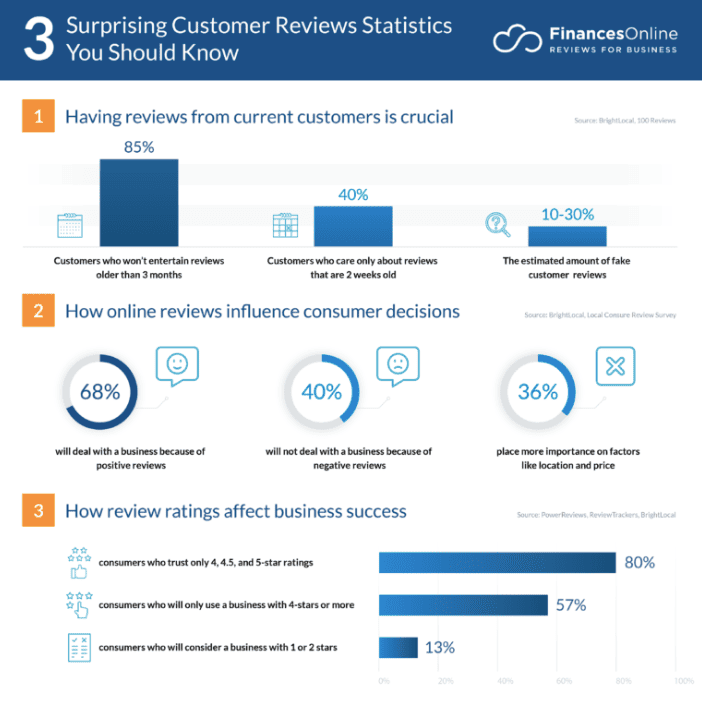
It showcases your brand’s trustworthiness. If you have zero reviews for a product, why would a customer trust your brand?
Even a bad review could clarify things for some buyers! This is because customer preferences are not the same across the board.
Check out this example. It shows a masterful leveraging of customer reviews on a popular website.

To get started with optimizing your customer reviews, you can consider using an app like Shopify’s Product Review. Alternatives like Loox, Yotpo, or Fera are also great options.
You can start sending feedback survey requests once you’ve set up your review management app. Many of your customers would be happy to oblige. User-generated content is shareable on social media too.
A well-timed email or SMS can encourage reviews and feedback. If you are struggling with this, start an incentive program for customers. For instance, customers can get free shipping or 10% off on their next purchase after they review a product. Also, one effective incentive for customers could be to set up free shipping on Shopify for orders above a certain amount. This can not only encourage more purchases but also increase customer loyalty.
Read more: 8 Free eCommerce Website Builders For Every New E-Preneur
2. Create email sequences for each stage of the buyer journey
Email is a secret weapon in the marketer’s arsenal. And, email has one of the highest returns on investment (ROI) of any marketing channel.
A study by Statista found that over 49% of customers would like to get more emails from their favorite brands. So, not everyone hates marketing emails! 😅
The good news is that you can use emails to keep your audience engaged at each buyer journey stage. You can use emails for any objective, from welcoming new subscribers to requesting your happy customers for referrals.
Below is a great example of a marketing email from GoPro.
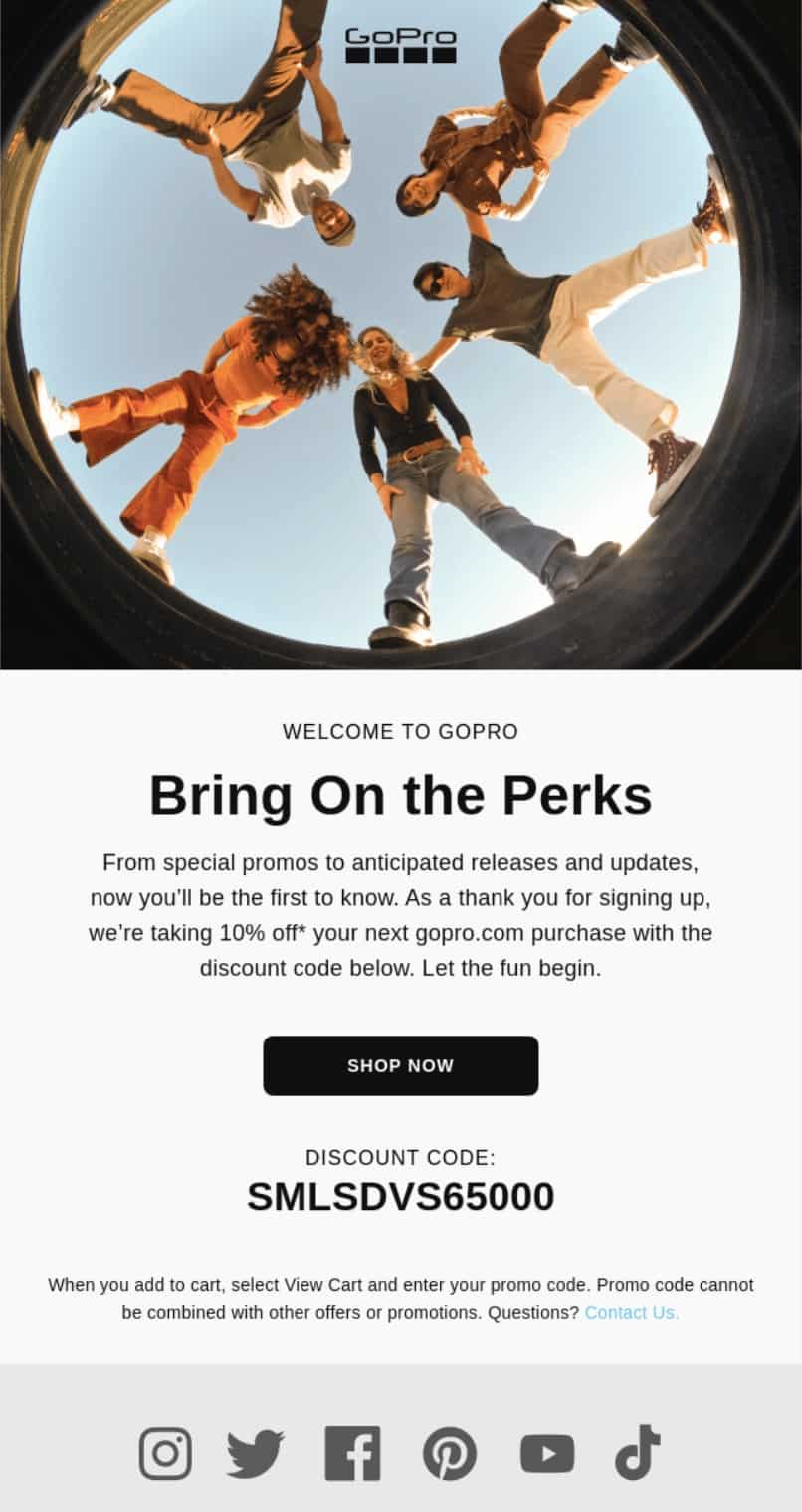
Here are some tips for creating email sequences for different buyer journey stages.
Awareness stage
At this stage, the customer wants to know how and why your product would help them. Start with a welcome email. Then, you can send emails with educational content that adds value. Don’t email too frequently at this point. The leads at this stage still need nurturing.
Consideration stage
This stage is great for understanding your customers’ pain points and preferences. Send emails with testimonials, case studies, and video guides. Your goal here is to drive these prospects to the decision stage of the buyer’s journey. Include a clear call-to-action button in each email.
Decision stage
This is the crunch time. Ideally, you need to capitalize on every lead that reaches this stage. A well-timed email with limited-time offers, discount codes, free demos, free webinars, or consultations can work wonders at this stage. These emails may just be the final push they need before buying your products.

Loyalty stage
Here, we are talking about your loyal customers. Remember that email marketing can foster a lifelong connection with your customers. At this stage, you can request them for reviews and ask them to refer your brand to their friends and family.
We recommend you personalize each message at this stage based on past behavior and customer interests.
Read more: 10 Ways CRM Can Help Create Better Email Campaigns
3. Invest more in SEO to rank higher in SERPs
If you want to rank higher on search engines, then SEO is going to be your best friend. While this is not the only factor that determines your success, it would be foolish not to streamline your Shopify SEO strategies.
Ultimately, the logic behind this is simple. There’s a reason why shopkeepers of the past preferred to set up their store on a busy street, right?
If your shoppers can’t find your store, they’re not adding to your business. In the virtual world, ranking high on the SERPs gives you a lot of visibility. Here’s what a search for ‘hoodies’ pulls up on Google (after the sponsored ads).
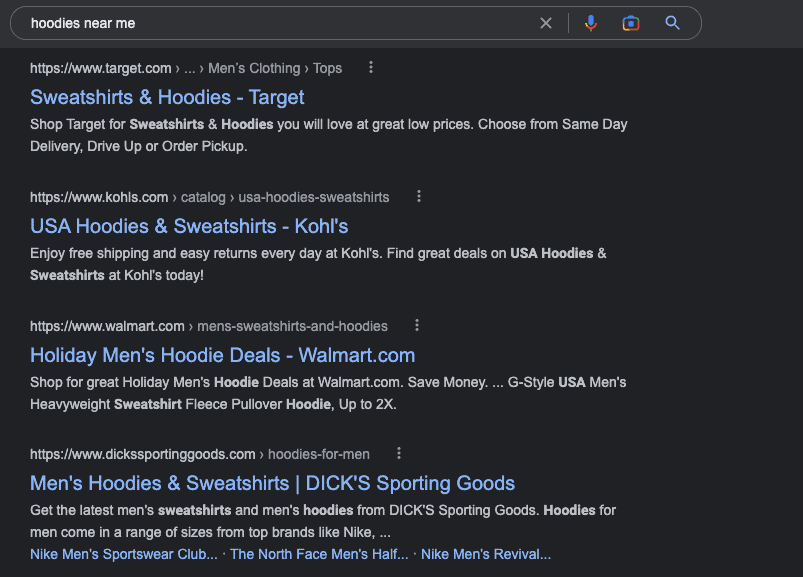
Your goal is to rank as high as possible, but the competition is intense. Here are some expert tips on taking your Shopify SEO strategy to the next level.
- The first step is to optimize your site structure. Include clear categories and sub-categories. This allows search engines to crawl through each page and rank them. Use strategic SEO keywords in your category names too.
- Run a thorough SEO keyword research campaign. Here, the goal is to understand the kind of keywords your prospects or target audience is looking for. Analyze your competitor keywords and their performance too.
- Next, you’ll need to optimize product pages. This includes the title, product images, and metadata.
- Create several healthy backlinks to boost your ranking. Search engines gauge how others in the community judge your content by the number of sturdy backlinks you have. It is a marker of trust.
Read also: The Best CMS for eCommerce
4. Publish posts on Pinterest regularly
You’re surely missing out if you still need to start marketing your products on Pinterest. Even if you are already using Pinterest, you can leverage it further to your advantage.
This is because Pinterest users spend 50% more than users of sites like Instagram or Facebook. Here are some more stats on why marketing on Pinterest is a must for eCommerce stores.
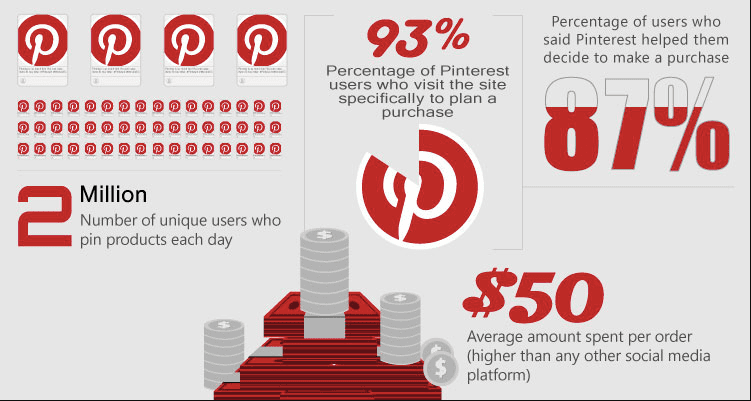
Another unique feature of Pinterest is the ‘Lens your Look’ feature which allows users to search for products through images. Pretty neat, right?
Also, Pinterest’s lens can recognize 2.5 billion products. This is a billion more products than Google Lens can identify! Not only that, but with ‘Buyable Pins’, Pinterest has also turned into a high-quality sales funnel.
People don’t have to go through the whole awareness and consideration stage anymore. They can buy directly from Pinterest.
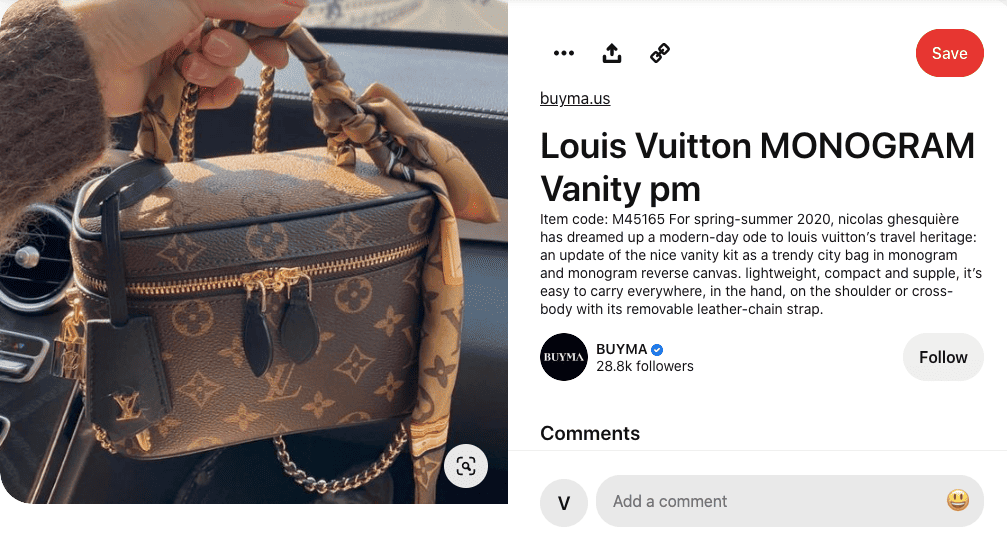
Here’s how to leverage Pinterest for your online store.
- Set up a Pinterest business profile and link to your website as well. Ensure consistent branding and quality images. Users come to Pinterest for new ideas and inspiration. So go for quality over quantity.
- Create excellent Pins and organize your Pinterest boards. Optimize each page for SEO as well. And, leverage niche interest on Pinterest by creating nice boards that your target audience would love.
- You can also create rich pins that will upload all your metadata about a product from your website. This will allow shoppers to purchase the product by clicking on your website link.
- Consider collaborating with influencers and other players in your industry for boards. This widens the reach for all parties involved and is a great way to boost sales too.
👉Want to elevate your ecommerce success? Uncover the top brands and their strategies in our extensive guide! 🏆
5. Promote your products with SMS integrations
How can SMS fit into your overall Shopify marketing strategy? This is an important question.
Text messages have an average open rate of 82%. Other channels don’t do so well. For instance, emails have an average open rate of 20%. And, 9 out of 10 customers prefer text messages over other means of communication from their favorite brands.
You can use SMS marketing for campaigns like:
- Welcoming new subscribers
- Purchase and shipping confirmations
- Limited-time discounts or offers
- Cart abandonment reminders
- Post-purchase feedback and reviews
Here’s an example of a promotional SMS informing the customer of a limited-time discount 👇🏻
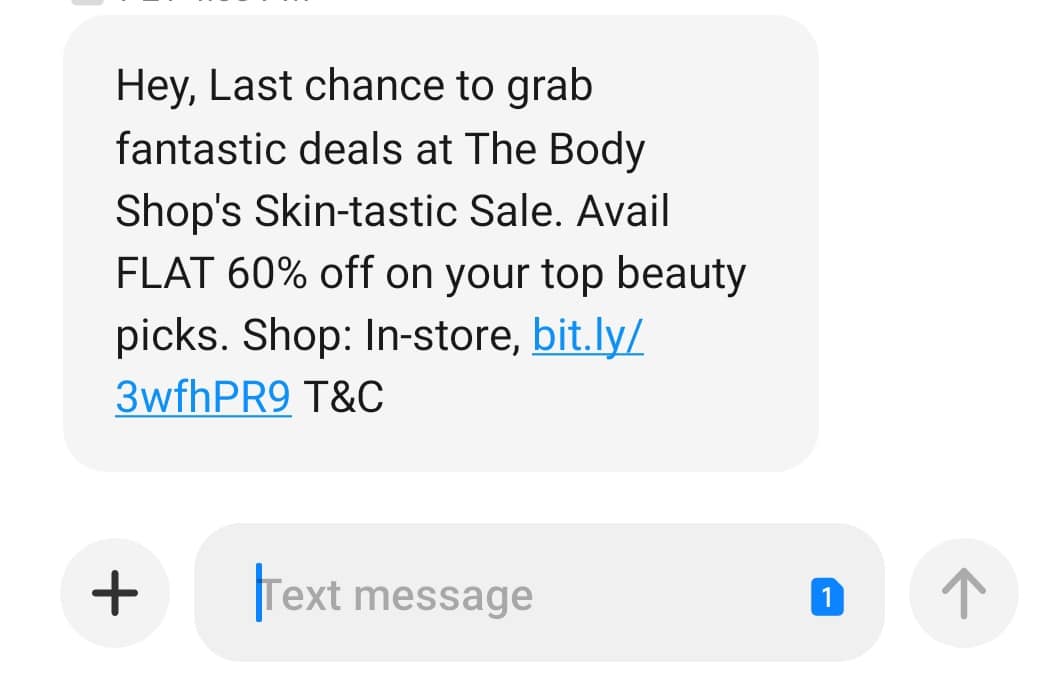
Another use case of SMS marketing is re-engaging inactive subscribers with offers and incentives. Check out this example from Marks & Spencer 👇🏻
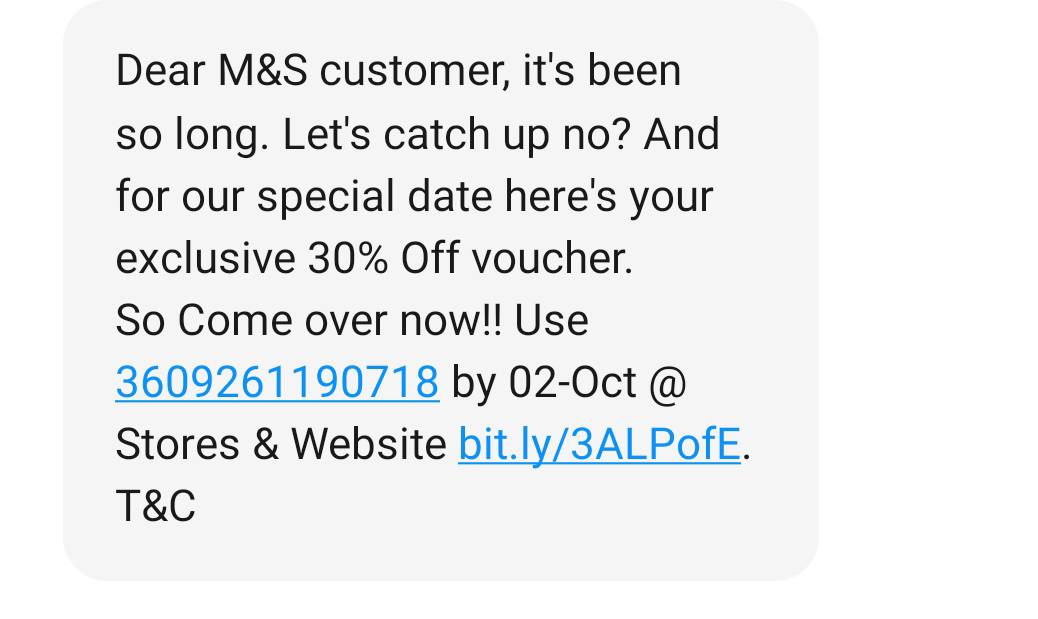
Read also: Top 7 Shopify Alternatives to Grow Your Online Business
6. Create and share simple video tutorials for each product
Most people love watching videos on the internet. And this trend is just expected to grow over the coming years.
Surveys show that around 91% of companies are already creating video content. In the same survey, 90% of marketers said video helped them generate new leads in the past year.
Your competitors are already leveraging the power of video to engage their customers and generate new leads. It’s time you jumped on this bandwagon if you haven’t already done this.
You can entertain and educate your audience by creating engaging video tutorials. Here’s a good example 👇🏻
You can also create fun, quirky, shareable videos on social media. Below is a nice example of a ‘how-to’ video from Bloom & Wild.
Include guides and behind-the-scenes videos on your YouTube page. Don’t forget to run an SEO audit of the headlines and URLs for all your videos.
7. Use a chatbot to improve your customer experience
Remember the old saying — “work smarter, not harder”? Well, a Chatbot for your Shopify store will do just that.
A lot of marketing success is based on providing a great customer experience at every stage of the buyer’s journey. With a Chatbot, you’ll be able to respond to customer queries faster. And, the Chatbot can handle multiple queries at the same time.
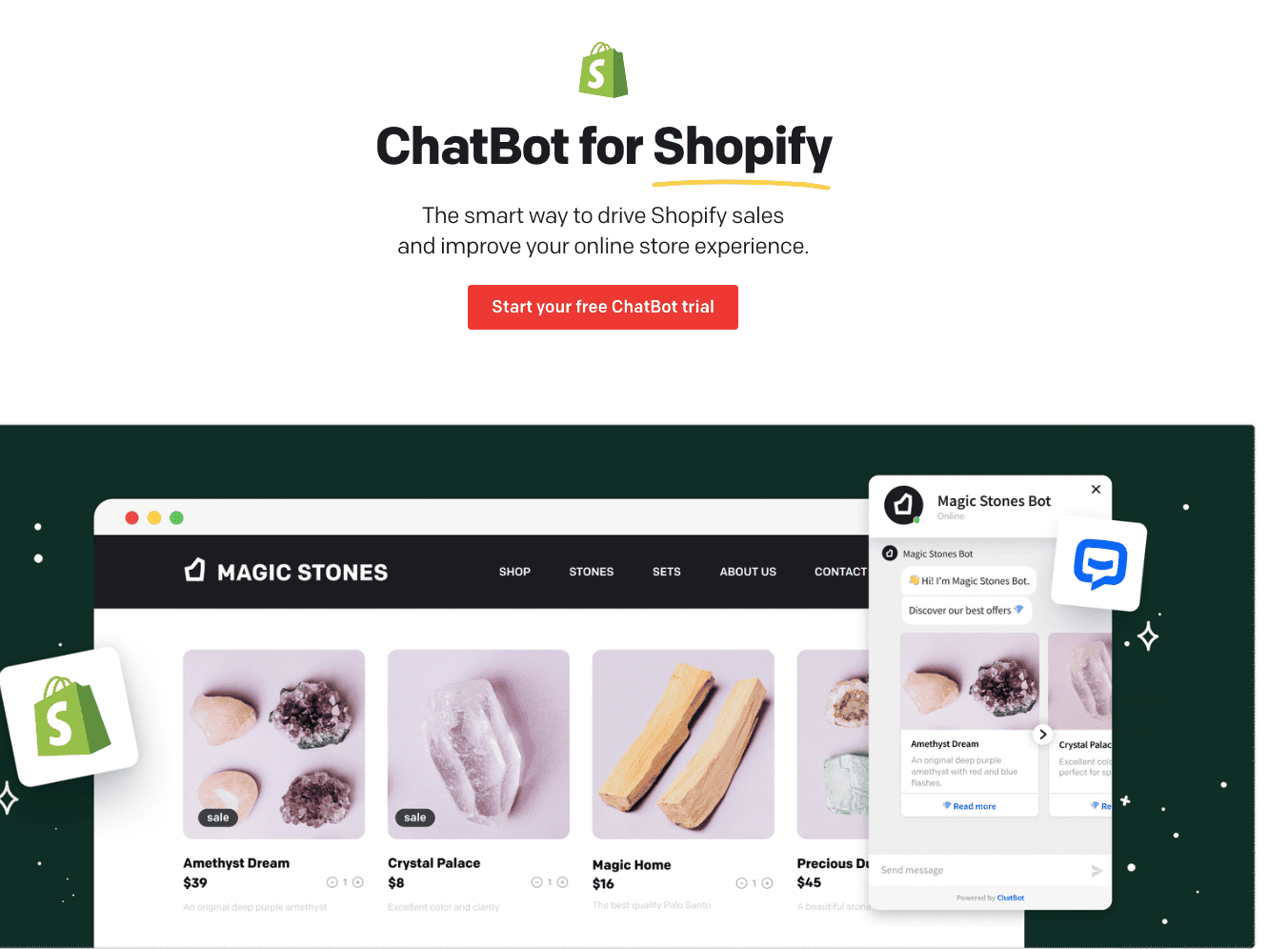
Chatbots can help you with the following aspects of your Shopify store marketing:
- Automate your sales processes
- Make product suggestions based on customer history or interests
- Tailor personalized offers for different segments of your contact list
- Handle customer queries 24/7
- Reach out to customers in case of cart abandonment
- Offer omnichannel support for all customers
- Generate new leads
Read also: Magento vs Shopify Buying Guide: Which is Better and Why?
8. Create a superb customer loyalty program
Retaining your old customers is just as important as generating new leads. According to studies, a mere 5% increase in customer retention can boost profits by over 25%!
This is why we suggest starting a customer loyalty program as part of your marketing strategy. This shows your customers that they are valuable to you. And, they get rewarded for their brand loyalty as well. This makes them feel valued.
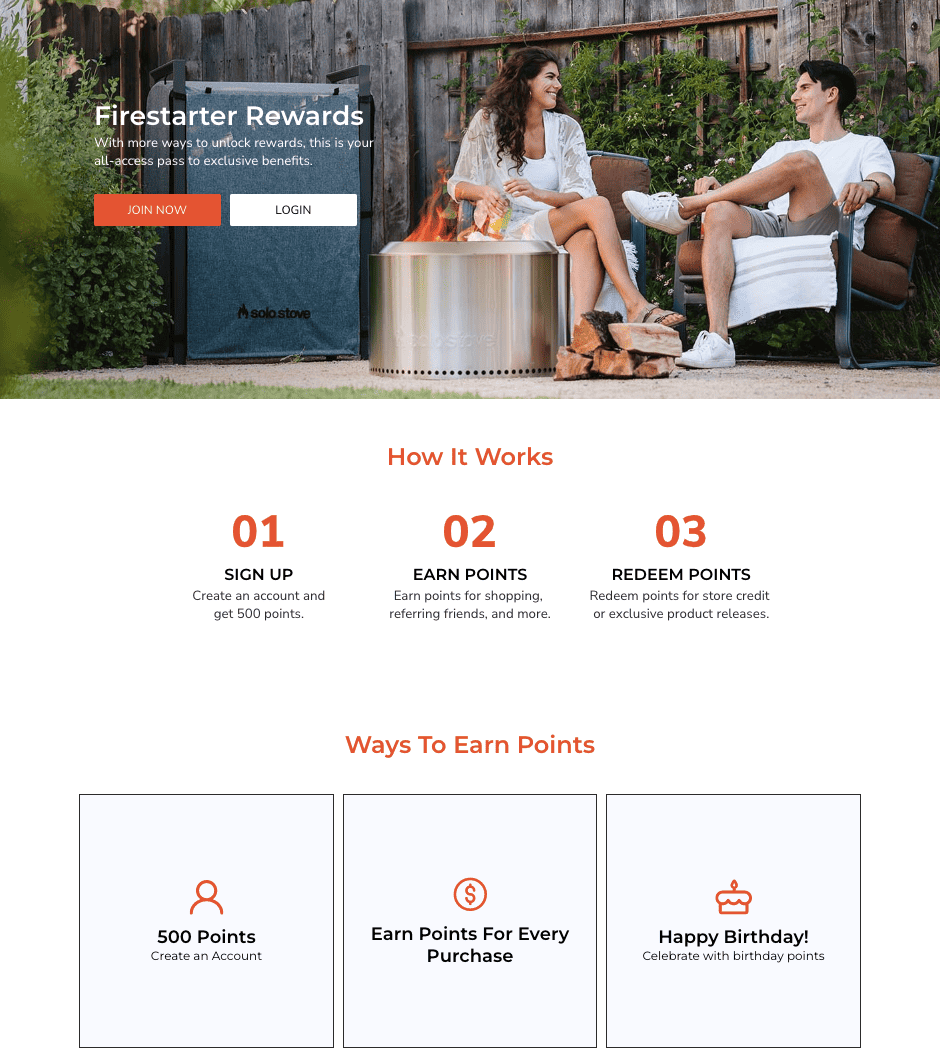
Here are some tips for creating your customer loyalty program.
- Ensure that every significant action taken by the customer is rewarded. And, the more actions they complete, the better the rewards should become.
- The loyalty program should be available to all your customers. Ideally, you should conduct a few surveys before launching your rewards program.
- Make it easy for customers to leave the program if they wish to.
- Give them a wide variety of rewards. Don’t just limit yourself to discounts or offers.
9. Create large, attractive CTA buttons for mobile UX
How do you make your call-to-action (CTA) buttons work just right for mobiles to drive your customers to take action?
Well, there’s a lot you can do to optimize your CTA buttons for mobiles. And it’s something you should seriously consider.
In a recent study on the impact of the CTA button, academics in Indonesia have found that a well-crafted CTA button led to increased impulse buying among the customers they surveyed!
So, how do you leverage this for your business? First, ensure that your CTA button is clickable.
What do we mean by that? From the image below, you can tell that a clickable CTA has graphics that make it stand out.
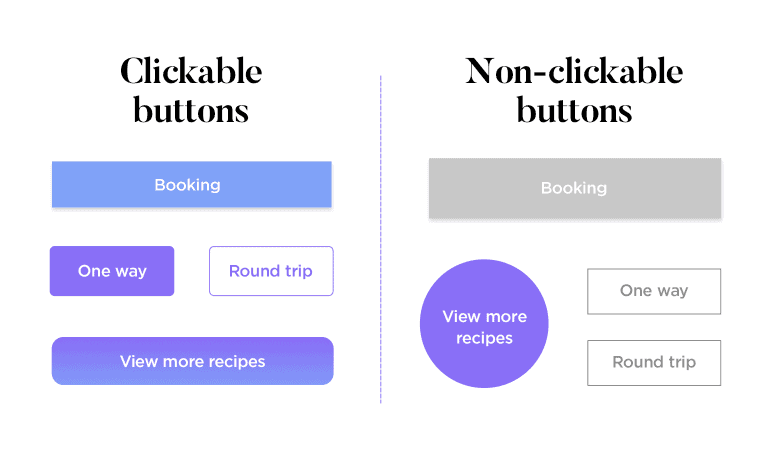
Apart from the main CTA button, consider including ‘ghost buttons’. Ghost buttons do not take away from the main CTA button. Look at the example of the ‘One way’ and ‘Round trip’ CTA buttons on the left side.
Run a few A/B tests on the color and positioning of the CTA button. Ideally, your CTA button should be placed in areas with high ‘thumb activity’.
Finally, your CTA buttons have to be the right size. On average, Microsoft recommends 34×26 pixels for mobile CTAs, while Apple recommends 44×44 pixels.
10. Promote products through push notifications
Push notifications are an effective way for marketers to directly reach the customer for re-engagement and lead generation. They are an effective way to reduce customer churn and can also see higher engagement rates than email marketing.
According to studies, 70% of customers find push notifications useful. And, 40% of these customers responded to a push notification within one hour.
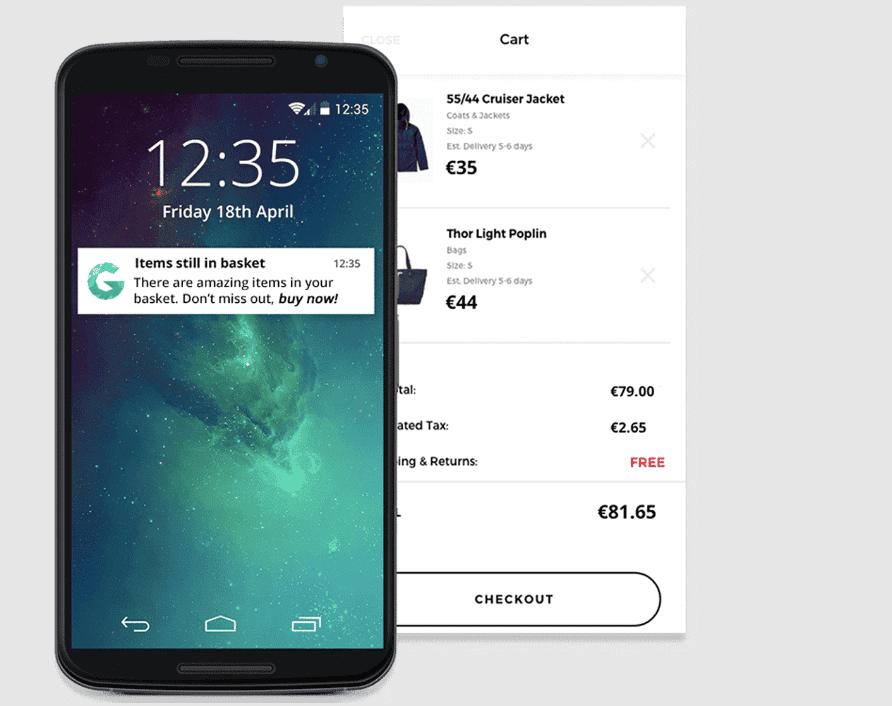
Here are some tips to get ahead with push marketing:
- Find the right frequency. The key to push marketing success is to deliver push notifications at the right frequency. Optimize the number of push notifications you send out depending on your app or product.
- Personalize push notifications for higher open rates. Not every customer would want to know about every promotion you have going on. According to studies, personalizing push marketing content can increase open rates for push notifications by 800%! You can trigger them based on customer interests, age, and past behavior.
- Your timing matters a lot. You’ll need to send push notifications based on the schedule of your customers. Analyze their past behavior to determine the time they are likely to use your app. People find push notifications annoying if they are sent at the wrong time.
11. Create an Instagram feed for your store
Instagram and similar social media channels are an excellent way for you to show off your user-generated content. The more social proof you can feature, the more trust you continue to build.
Start a business profile on Instagram, if you haven’t already. Here’s a great example from Milton & Goose 👇🏻
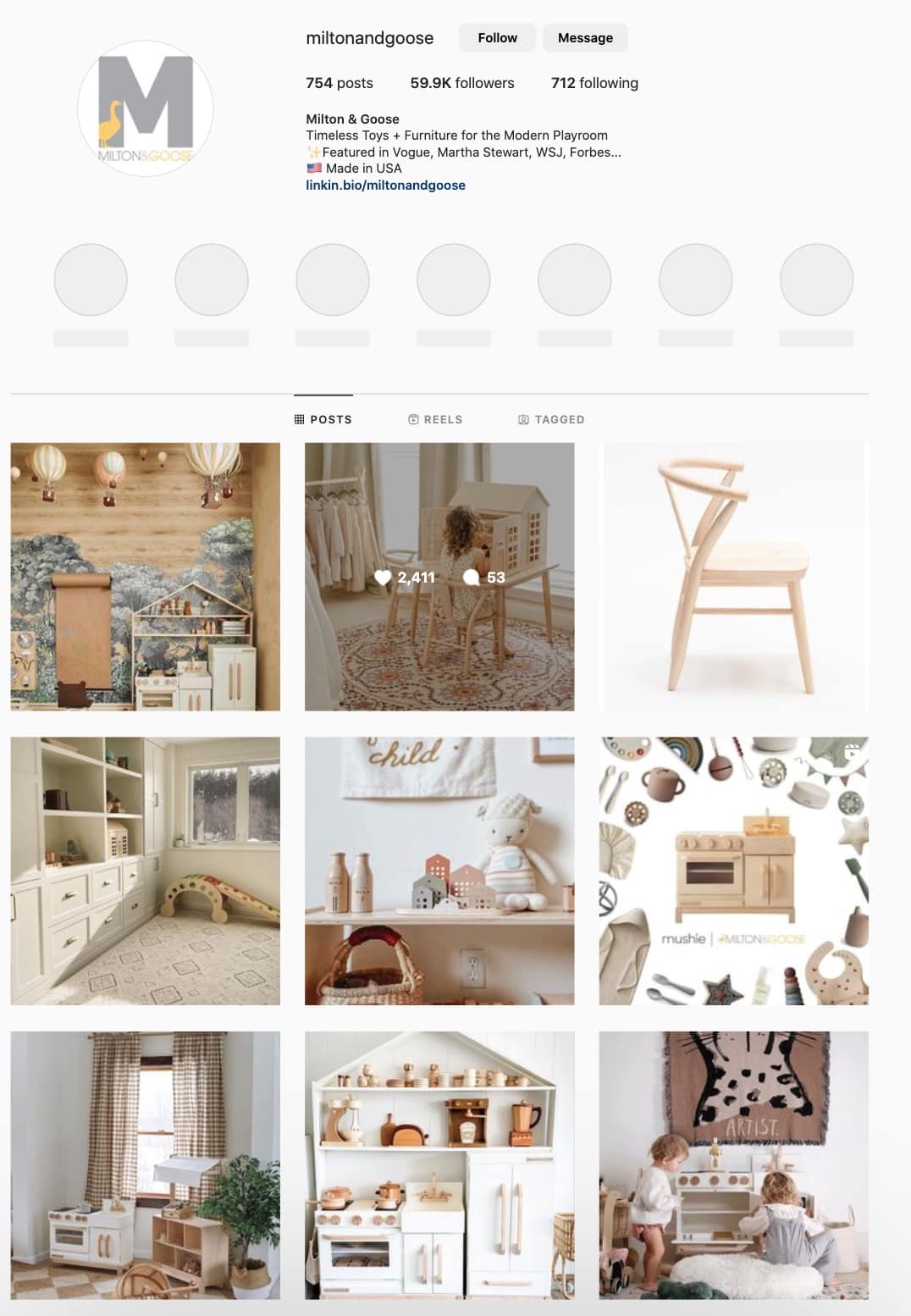
Here are some tips on Instagram marketing:
- Create quality content for posts, stories, and reels. Stories typically have a larger organic reach when compared to posts.
- Be authentic and feature your company aesthetic. Unlike the ‘Mad Men’ days of marketing in the 50s, copies for social media are more conversational and open-ended to generate more engagement. People want to see authentic, behind-the-scenes content.
- Post regularly and organize giveaways, contests, and limited-time discounts.
12. Use automation to streamline marketing strategies
Marketing automation means running pre-defined workflows to complete repetitive tasks. It saves time on repetitive tasks and improves the accuracy of your marketing process.
For example, you can set up an email marketing automation workflow to email customers in case of cart abandonment. This is just the tip of the iceberg of what you can do.

Here’s what a simple marketing automation workflow looks like in EngageBay:
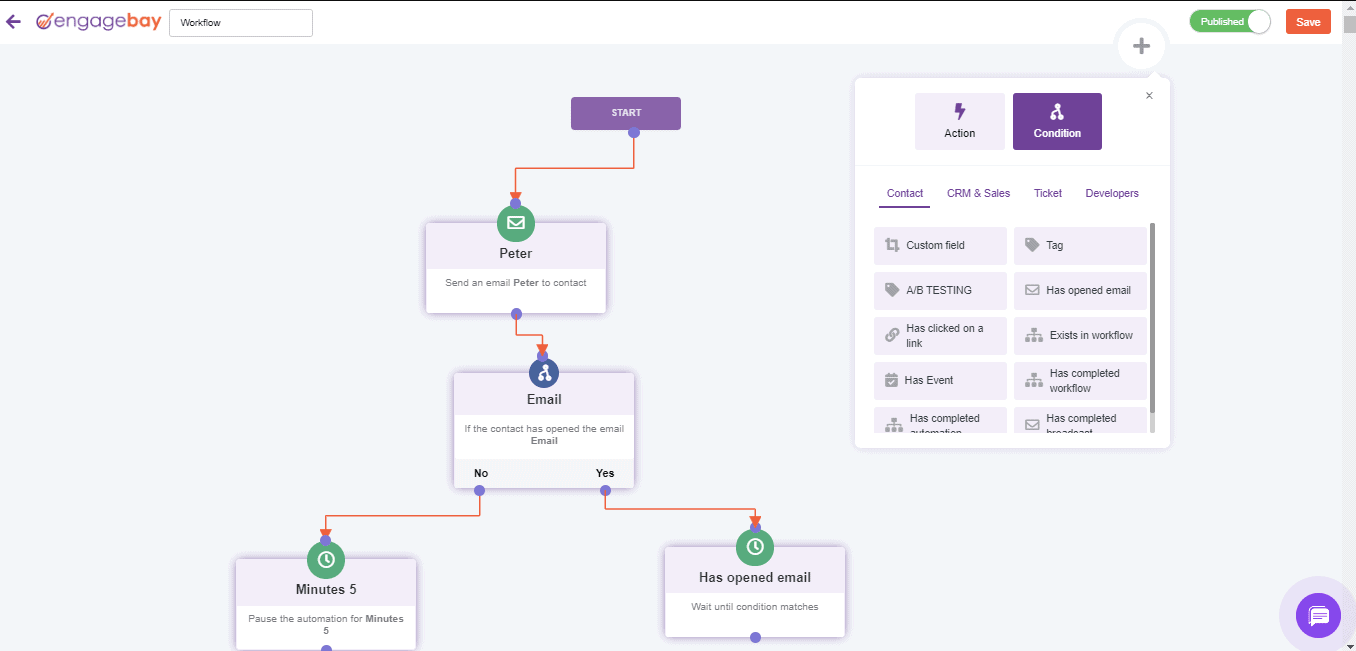
Some common yet powerful use cases of marketing automation are:
- Triggering notifications based on current inventory levels.
- Customer segmentation and lead scoring.
- SMS campaigns for order status or tracking.
- Product targeting based on previous customer interactions.
- Monthly newsletters and email drip campaigns.
- Social media campaigns and scheduling.
Read more: 15 Easy Steps to Build a Personalized eCommerce Marketing Plan
13. Integrate your CRM platform with Shopify
A Customer Relationship Management (CRM) system helps you gather and segment customer lists, generate new leads, and streamline marketing campaigns.
Now, any CRM platform comes with several integrations with marketing tools, sales tools, customer service tools, and payment management.
So, we recommend integrating your CRM platform with Shopify. This means you can directly sync and update data with your CRM system.
Here’s EngageBay’s native integration with Shopify for eCommerce business owners:
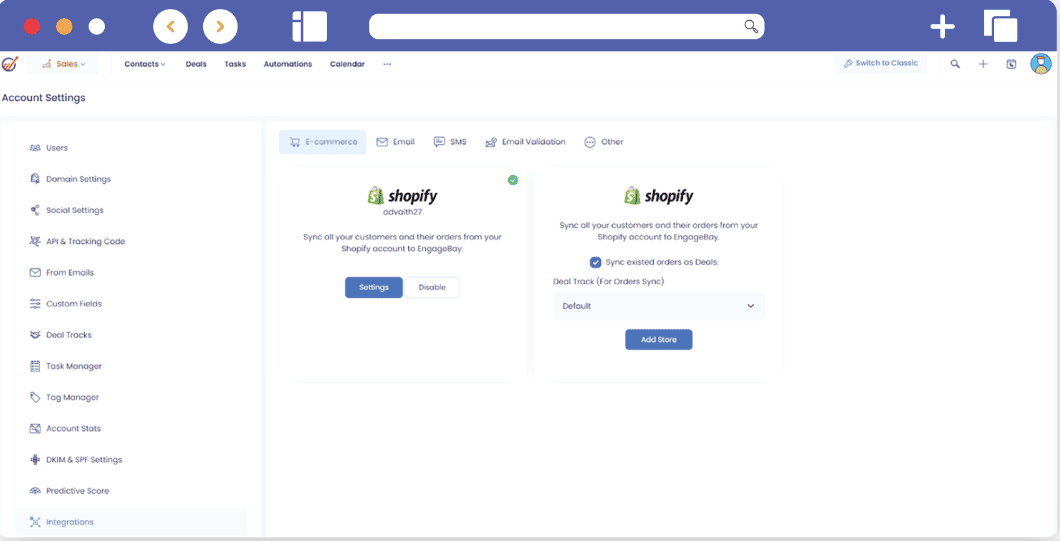
Ensure that your CRM platform can be integrated with your Shopify store. Alternatively, you can get your team to write code that integrates the two apps.
Another option is to use API (Application Programming Interface) to allow apps to communicate seamlessly with each other. For example, Uber uses API integration to connect seamlessly to Google Maps.
Convert Shopify data into campaign gems with EngageBay
14. Start an affiliate marketing campaign
An affiliate program or an associate program can help you meet your marketing goals in the long run.
In an affiliate marketing program, there is a strategic partnership between your company and your affiliate marketer. In this model, your affiliate earns a commission for each product they can market.
Let’s say you signed up an Instagram influencer as an affiliate. Then, they’ll find ways to promote your products to their niche audience.
For every sale made through your affiliate, they will earn a commission. And, you get more visibility without having to pay through your nose!

Follow these steps to build a great affiliate program for your store:
- Get clear on your affiliate marketing goals and KPIs to measure.
- Do some research on your competitors’ affiliate programs. This will ensure that your payoffs and expectations are in-line with industry standards.
- Determine your strategy for commissions and payoffs. Your commission strategy can be based on new sales, new leads, or new sign-ups.
- Calculate your current and previous customer retention rates. This is crucial to measure the success of your affiliate program.
- Get in touch with prospective affiliates in your product niche. You can consider email marketing, social media influencers, industry bloggers, or your loyal customers.
- Measure your KPIs regularly and update your affiliate marketing strategy.
15. Blog regularly and write ‘helpful’ content
If you’re looking to establish yourself as a leader in your industry and generate organic leads, you must blog regularly. But, it’s a slow game that rewards you only if you add value to your customers’ lives.
Think of your blog as a library catalog for everything related to your product category. Users can quickly search and find accurate, reliable content for your area, just like a well-stocked library.
According to a recent study by the Content Marketing Institute, 76% of marketers say blogs generate new leads. Roughly half of your prospects will read 3-5 pieces of content before making a new purchase.

Here’s how to leverage the power of blogs for your Shopify marketing strategy:
- Build your blog content based on customer pain points at each buyer journey stage. Curate a wide variety of quality content.
- Run keyword and backlink research for your competitors. You’ll get a fair idea of the kind of content and keywords that generate the most organic traffic.
- Don’t sell your products with every blog. Be strategic. Focus on building a thorough knowledge base instead.
16. Keep an eye on your competitors’ strategies too
Competitor monitoring simply means identifying and tracking your competitors’ current marketing strategies, KPIs, and anticipating future strategies.
This allows you to stay on top of current trends in your industry, identify your strengths and weaknesses, and refine your marketing strategy.
Here are some crucial aspects to include in your competitor monitoring:
- Create a list of your competitors and analyze their websites first. This includes studying their blogs and other marketing content, analyzing high-performing keywords, and a summary of their organic and paid traffic.
- Sign up to receive newsletter and email updates from your competitors. Try to understand how they cater to the pain points of their customers.
- Track customer reviews for all your competitors. This will give you a clear idea of what your target audience is looking for.
- Monitor your competitors’ social media and YouTube marketing strategies.
- Set up automated workflows to track all the metrics and data mentioned above.
Read more: 17 Affiliate Marketing Programs That Bloggers Should Not Miss
EngageBay has native integration with Shopify now!
If you’re looking for a reliable CRM platform with a native Shopify integration, EngageBay is the way to go.
With EngageBay’s Shopify integration, you can seamlessly sync and update data between the two powerful platforms.
What’s the end result? Well, complete customer satisfaction. Here’s a video for a complete breakdown of EngageBay’s Shopify integration.
Whether you need to update your inventory levels, set up automated workflows, or directly leverage the power of Shopify marketing, feel free to get in touch with us for a demo.
Read more: eCommerce Integration — Do You Need It?
Shopify Marketing FAQs
We answer some of the most common questions we get about Shopify marketing.
How do I set up marketing on Shopify?
Start by going to the Marketing section on Shopify. From this portal, you’ll be able to create and manage your Shopify marketing campaigns. For best results, integrate your CRM with Shopify.
How much does it cost to market a product on Shopify?
This will depend on your products and the Shopify plan you choose. Shopify email marketing is free for up to 2,500 emails per month. You’ll need to select a suitable payment plan depending on your marketing needs.
Can I use my own domain name with Shopify?
Yes. You can connect the third-party provider to your Shopify store if you already own a domain name. You can add up to 20 domain or subdomain names on the standard plan.


